How to Increase Ecommerce Conversion Rates: Expert Tips
- Chase McGowan

- Oct 14
- 12 min read
If you want to increase your e-commerce conversion rates, it really boils down to one thing: deeply understanding your specific audience and making targeted, data-backed improvements. It’s all about focusing on the levers that actually drive profitable growth, not just chasing generic industry benchmarks.
This means you have to move beyond a one-size-fits-all approach and dig into what truly works for your store. This is the core philosophy that separates a dedicated, individual consultant from an overpriced, bloated agency.
What Is a Good Ecommerce Conversion Rate, Really?
Before we jump into optimization tactics, let's set a realistic baseline. I see so many e-commerce owners get fixated on a single "good" conversion rate, but the truth is, it’s a moving target. What's "good" is defined by your industry, traffic source, and even the devices your customers use.
This is exactly where large, bloated agencies often miss the mark. They apply generic benchmarks that simply don't fit your unique business.
An overpriced agency might tell you to aim for a 3% conversion rate because it's the "industry average." But that advice is completely useless without context. A luxury home decor store will never convert at the same rate as a fast-moving personal care brand, and that's perfectly normal. As an expert consultant, my focus isn't on vanity metrics; it's on identifying the specific levers that boost your revenue and set the stage for smart, profitable growth.
Why Context Matters More Than Averages
Obsessing over a single number is a recipe for frustration. A much smarter approach is analyzing your own data to set meaningful goals.
Globally, the average e-commerce conversion rate hovers between 2% and 4%, but this varies wildly by sector. For instance, personal care products often boast higher conversion rates, while home decor and fashion typically see much lower numbers. Device type also plays a huge role; desktop users almost always convert at a higher rate than mobile users, even though mobile often accounts for the majority of traffic.
The infographic below really paints a clear picture of how much conversion rates can differ across various e-commerce sectors.
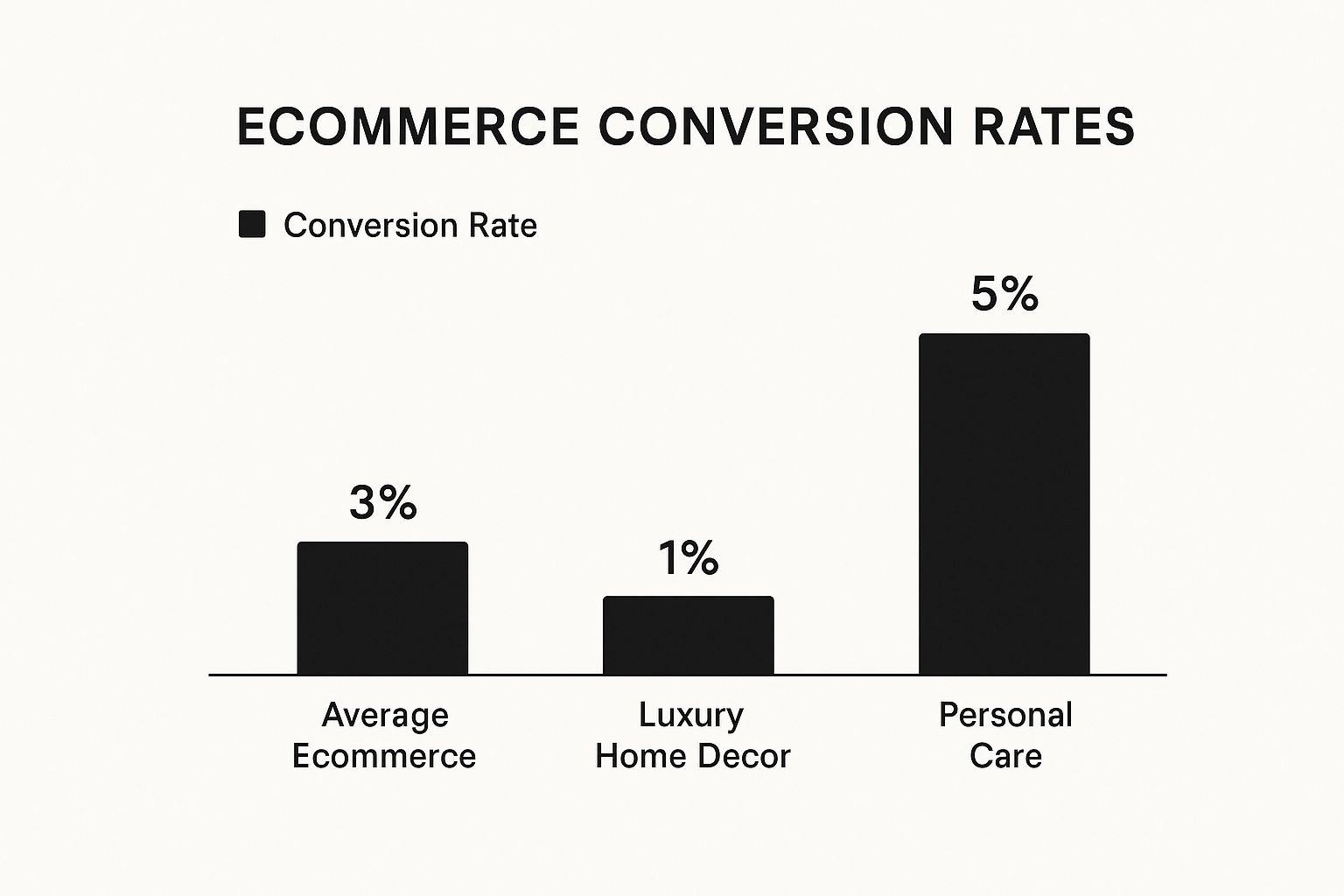
As the chart shows, a 5% conversion rate in personal care is strong, but a 1% rate in luxury home decor could be absolutely excellent for that niche. Before you can even think about optimization, you need a rock-solid grasp of the fundamental key e-commerce metrics like CTR, CVR, LTV, and AOV.
This difference in approach—focusing on contextual, profitable growth versus generic benchmarks—is a key distinction between hiring a specialist and signing a bloated agency contract. Let's break it down.
The Agency Approach vs The Expert Consultant Strategy
Focus Area | Typical Agency Approach | Expert Consultant Approach |
|---|---|---|
Goal Setting | Aims for generic "industry average" conversion rates (e.g., 2-3%). | Sets goals based on your historical data, profit margins, and specific traffic channels. |
Data Analysis | Looks at high-level dashboard metrics. | Dives deep into user segments, device performance, and on-page behavior to find hidden opportunities. |
Strategy | Applies a one-size-fits-all CRO "playbook" to all clients. | Develops a custom testing roadmap tailored to your store's unique friction points and customer psychology. |
Reporting | Sends a monthly report filled with vanity metrics that look impressive but lack business context. | Focuses reporting on profit-driving metrics like AOV, LTV, and cost-per-acquisition. |
This table highlights why a tailored, expert-led strategy consistently outperforms the cookie-cutter methods that many agencies rely on. It's about depth over breadth.
The key takeaway is this: A "good" conversion rate is one that is consistently improving for your specific business, leading to increased profitability. It’s about outperforming your past self, not chasing an irrelevant industry average. This is the focused, specialist approach that drives real results, unlike the cookie-cutter strategies often used by larger firms.
Fix Your Foundation Before Spending on Ads

Running ads to a store with a broken user experience is just like pouring water into a leaky bucket. I've seen it time and time again—overpriced agencies jump straight to launching flashy campaigns, eager to start billing hours, while completely ignoring the glaring holes in the website itself.
My approach is different. As a hands-on consultant, my first move is always to plug the leaks. We have to make sure every single ad dollar has the best possible chance of turning into revenue before we scale.
This isn't about guesswork; it's about making surgical fixes to the non-negotiables that directly impact your ability to turn visitors into customers. This level of detail is something often lost in a large firm's standardized playbook.
Diagnose and Repair Core User Experience Issues
Before you even think about spending a cent on traffic, you need to walk through your site from a customer's perspective. Are you making it easy for them to buy, or are you putting roadblocks in their way?
These are the mission-critical areas I check first:
Lightning-Fast Page Speed: A one-second delay in mobile load times can slash conversion rates by up to 20%. Slow sites absolutely kill sales.
Intuitive Mobile-First Navigation: Most of your traffic is on a phone. If users can't find what they're looking for in a few taps, they're gone. Simple as that.
Compelling, Trustworthy Product Pages: This is where the purchase decision happens. You need high-quality images, crystal-clear descriptions, and prominent social proof. No exceptions.
I once audited a client's site where conversions were tanking despite decent traffic. Heatmaps showed that visitors were constantly tapping on a static brand logo on their product images, thinking it would open a gallery. We added a simple image carousel, and their add-to-cart rate jumped by 15% in one week.
That's the kind of small, surgical fix that a big agency assembly line would have missed. For more ideas on shoring up your site, check out these 9 Conversion Rate Optimization Best Practices.
Build Trust with Unshakeable Social Proof
In a crowded online world, trust has become the ultimate currency. An incredible 99% of shoppers now look at reviews before they buy. That's not just a statistic; it's a clear signal that third-party validation is no longer optional.
A specialist consultant understands that trust isn't built with a single widget. It's woven into the entire user journey—from the homepage to the final checkout click. This granular focus is my advantage over larger, less specialized agencies.
But just having reviews isn't enough. It's how you present them that matters. Integrating authentic, user-generated photos and videos right on your product pages can give conversions a serious lift, turning passive social proof into an active selling tool.
To learn more about crafting pages that actually drive sales, check out our guide on how to build high-converting landing pages that win.
Once these foundational elements are locked in, you’ve built a solid base for profitable ad campaigns that deliver real results.
Deploy Surgical Google Ads That Actually Convert
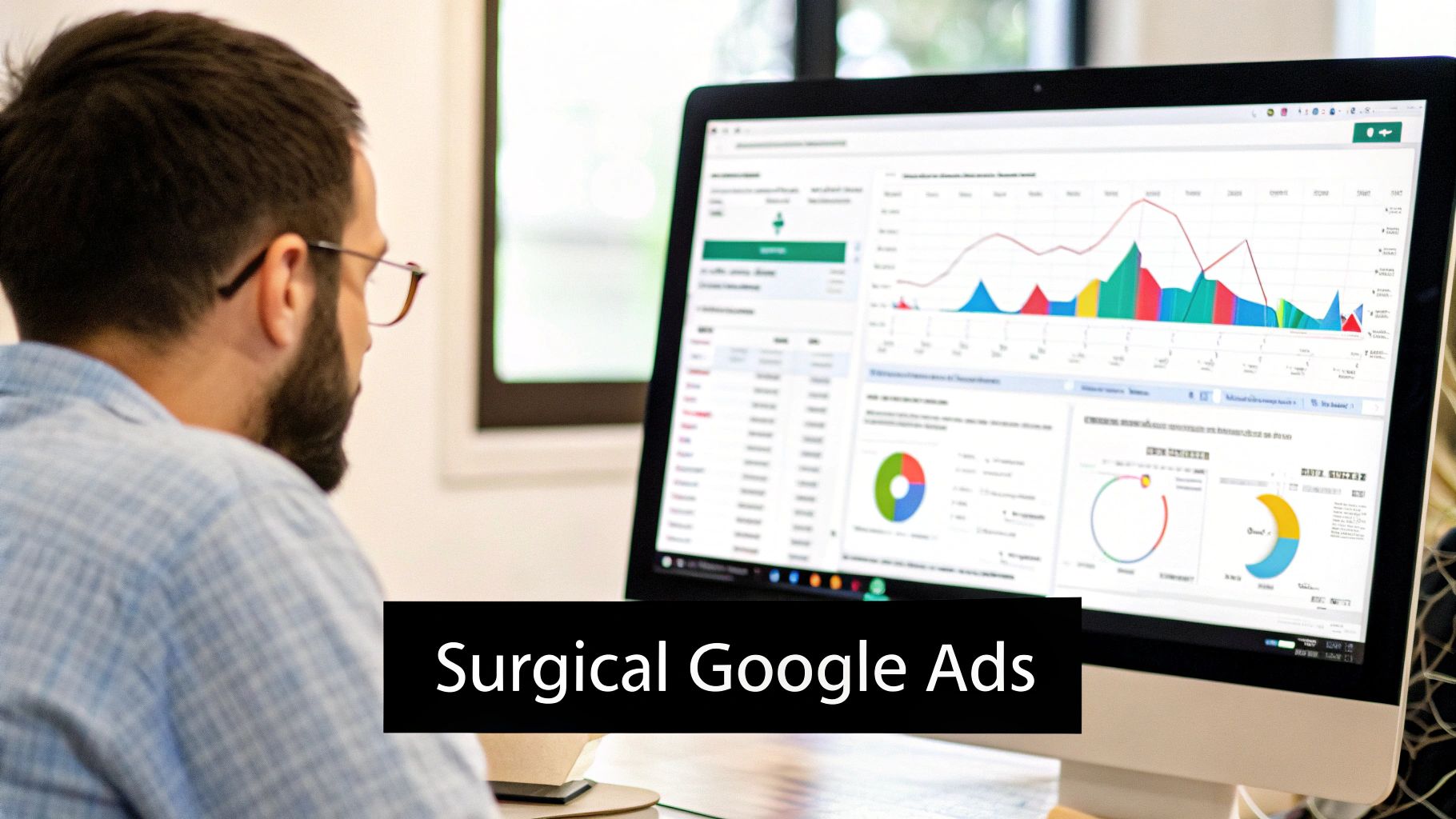
This is my workshop. For an e-commerce brand, the Google Ads dashboard can feel like a money pit, but for a specialist, it's a control panel for building profitable growth.
This is where a hands-on consultant leaves a typical agency in the dust. Forget those wasteful, broad-match campaigns that burn your budget on irrelevant searches. We’re not just launching ads; we're building a profitable customer acquisition channel from the ground up.
A junior account manager at a big agency is often juggling dozens of clients with a standardized playbook. My advantage is precision. I’m not just running campaigns; I’m obsessed with your specific business goals and your bottom line.
The Power of High-Intent Keywords
The first move is to stop wasting money on vague, top-of-funnel keywords. A typical agency might throw your budget at a term like "running shoes," which casts a massive net but catches thousands of people who are just browsing. That’s a fast way to get a lot of clicks and zero sales.
I build hyper-focused ad groups around long-tail keywords—the kind of phrases that scream purchase intent.
Think about it. A person searching for "women's size 8 trail running shoes for flat feet" isn't just window shopping. They know exactly what they want and they’re ready to buy it. This granular approach means your ad spend is laser-focused on attracting visitors who are far more likely to convert.
If you’re going to pay for traffic, you have to pay for the right traffic.
Here’s a quick look at how keyword intent translates directly to conversion rates for a fictional online shoe store.
High Intent vs Low Intent Keyword Examples
Keyword Type | Example Keyword | Typical Conversion Rate |
|---|---|---|
Low Intent (Broad) | "running shoes" | 0.5% - 2% |
Medium Intent | "best women's trail shoes" | 2% - 5% |
High Intent (Long-Tail) | "buy Brooks Adrenaline GTS 22 women's size 9" | 8% - 15%+ |
The data doesn't lie. Specificity is directly tied to conversion rates. It’s not about getting the most clicks; it’s about getting the most profitable ones. And once you've nailed your keywords, you need to learn how to write ad copy that actually converts to seal the deal.
Guiding the Algorithm with Precision
Modern Google Ads campaigns, especially Performance Max (PMax), are all about machine learning. A bloated agency might just upload your product feed, hit "go," and let the algorithm figure it out. That's not a strategy; it's an expensive gamble.
My process is different. I treat PMax like a tool, not a magic button. By feeding it meticulously crafted audience signals and asset groups, I actively guide the algorithm. I'm telling it exactly who your ideal customer is based on their search history, website visits, and demographics. You're not just hoping for the best; you're steering the machine toward profitable conversions.
This hands-on guidance ensures your budget targets audiences most likely to buy, not just random users the algorithm thinks might be interested.
Finally, we’ll deploy advanced remarketing strategies (RLSA) to re-engage visitors who’ve shown interest but haven't pulled the trigger. By hitting these high-intent users with tailored offers, we can significantly lift conversion rates and turn hesitant shoppers into loyal customers.
Build Unshakeable Trust From Product to Checkout
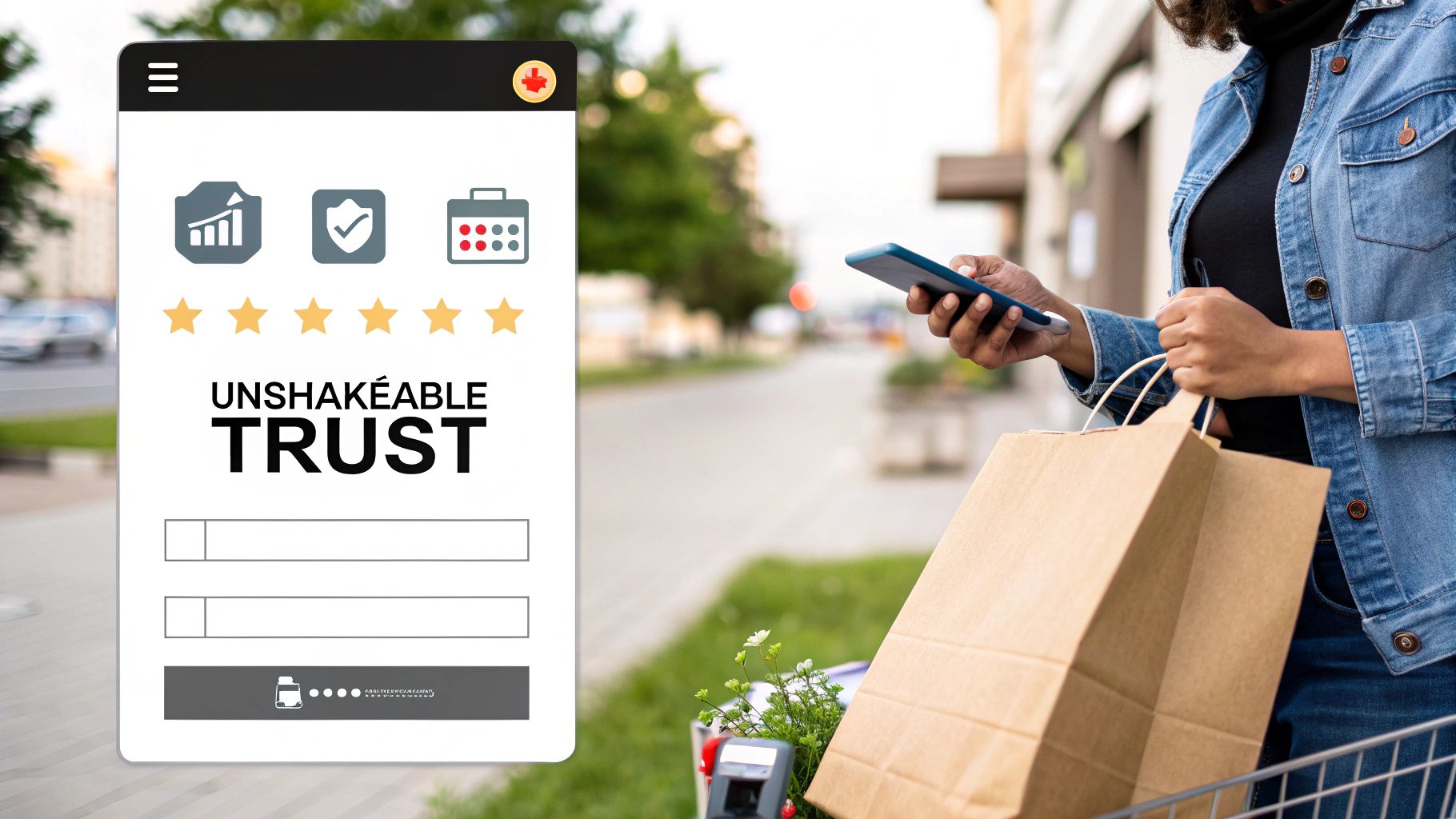
Getting traffic from your ads is just the start. The real fight begins when a shopper lands on your site and has to decide whether they trust you with their credit card details. If there's even a shadow of a doubt, they're gone.
This is where a solo consultant's mindset really pays off. A big agency might just follow a checklist and slap some generic trust badges in the footer. I dig deeper, looking at the psychology of trust at every single decision point in the buyer's journey. It’s not about logos; it’s about a deliberate strategy.
These are the small, intentional details that create a huge lift in conversions—and they're almost always missed in a generic agency playbook.
Weave Trust Signals Into Key Decision Points
Trust isn't built all at once. It's the sum of many small reassurances that tell the shopper they're making a smart, safe choice. An agency might just add a reviews widget and call it a day, but a specialist knows that where you place that widget is everything.
You have to be strategic, putting the right signals in the right places at the right time.
On Product Pages: This is where skepticism is at its peak. You need authentic customer reviews (ideally with photos), clear shipping estimates, and a link to your return policy right next to the "Add to Cart" button.
In the Shopping Cart: Right before they commit, you can reinforce their decision with messages like "You've qualified for free shipping!" or display the logos of the payment methods you accept. It normalizes the idea of paying.
During Checkout: This is the final and most critical hurdle. Here, you absolutely need security badges (SSL, McAfee, etc.) and logos for multiple payment gateways like PayPal, Shop Pay, and Apple Pay. These are brands your customers already trust, and that trust extends to you by association.
This step-by-step approach builds confidence and walks the user from browsing to buying without giving them a single reason to hesitate.
The goal is to answer a shopper’s security questions before they even think to ask them. A strategically placed return policy or a familiar PayPal logo can quiet that little voice of doubt that leads to abandoned carts. This is the kind of hands-on, nuanced work I specialize in.
Optimize Your Checkout for Maximum Conversions
The checkout flow is a minefield where countless sales go to die. If it's clunky, confusing, or asks for too much information, it’s a guaranteed conversion killer. I've seen overpriced agencies completely ignore this, focusing only on top-of-funnel metrics while the business bleeds cash at the last step.
My process involves a meticulous teardown of the entire checkout experience. I analyze what the highest-converting stores are doing and apply those battle-tested principles to your site.
Here’s a real-world example: I audited a store whose checkout form demanded 12 required fields, including a "Company Name" field that was confusing individual customers. We got rid of three non-essential fields and made guest checkout the default. The result? We cut cart abandonment by 18% in the first month.
That’s the kind of granular, high-impact optimization a specialist delivers. It's not about a massive redesign; it's about finding and fixing every little point of friction. Big firms often don't have the time for this detailed work, but it's where the biggest conversion gains are hiding.
Use Data to Outsmart and Outperform the Big Agencies
As a solo expert, your biggest advantage isn't budget—it's agility fueled by data. This is how you win. You don't need a bigger team; you need to be smarter and faster.
Large, bloated agencies are often slow to react, bogged down by internal meetings, sign-offs, and junior staff running the reports. Your edge is turning raw data into decisive action before they’ve even scheduled their first follow-up call.
This data-first mindset is how you consistently make better decisions and drive superior results. It all starts by tracking the entire customer journey, not just the final sale. While an agency might fixate on a generic conversion rate, a specialist hunts for the micro-conversions that signal high purchase intent—like a customer watching a product video or using an interactive sizing guide.
From Vanity Metrics to Actionable Insights
The first step is moving beyond the defaults. You need to set up meaningful goals in Google Analytics that actually reflect what drives your business forward, instead of just tracking the final transaction.
Think about the small wins that lead to a sale. Those are the events you need to track.
A standard GA4 dashboard gives you a high-level snapshot, which is a decent starting point. But the real power comes from digging deeper and creating custom event goals that measure true engagement.
For context, data from 2021 to 2022 across 250+ retail brands showed an average eCommerce conversion rate of just 2.7%. The numbers varied quite a bit by region, with the UK hitting 4.1% and the US at 2.5%. This tells us that market maturity and consumer trust play a huge role. You can see more of these conversion rate statistics on bloggingwizard.com.
Your advantage isn't just having access to this data; it's your ability to rapidly test and implement changes based on it. While a large agency might run one slow, committee-approved test a month, you can run several. You'll learn and adapt at a pace they simply can't match.
Rapid Iteration and Testing
My framework is built on one simple principle: rapid, iterative A/B testing on the elements that matter most. You don't need a huge team to see what's actually working.
You can start small and still get big wins. Try testing:
Headlines: Pit a benefit-driven headline against one that just highlights a feature.
Calls-to-Action: Is "Shop Now" better than "Get 20% Off Today"? Test it and find out.
Button Colors: It sounds simple, but a change from blue to a high-contrast orange can sometimes produce a surprising lift in clicks.
This nimble approach allows you to gather insights and make impactful changes without waiting for approval.
To really connect the dots, it’s critical to understand how to measure advertising effectiveness from top to bottom. This is how you outsmart and outperform larger, slower competitors, every single time.
Common Questions About Ecommerce Conversion
Business owners often ask me the same core questions when they're struggling to improve their ecommerce conversion rates. They’ve tried the generic advice from oversized agencies and are left wondering why nothing seems to move the needle. Here are direct, actionable answers pulled from years in the trenches.
Why Did My Conversion Rate Suddenly Drop?
A sudden nosedive in conversions is almost always tied to something you just changed. Did you launch a new ad campaign? Update your website theme? Change a product price? A bloated agency might take weeks to diagnose this, but an individual consultant can move fast.
My first move is always to segment the data in Google Analytics. Was the drop specific to a certain device, browser, or traffic source? More often than not, a botched site update kills conversions on Safari while Chrome users are sailing through just fine.
This granular, hands-on analysis gets to the root cause quickly—something often missed by junior agency staff juggling dozens of accounts.
The most common culprit is a technical glitch or a broken user experience element. My advantage is agility—I can dive into your analytics, identify the exact friction point, and guide you on a fix before a slow-moving agency has even scheduled its first internal meeting.
How Do I Prioritize CRO with a Limited Budget?
This is where a specialist provides real value over a high-overhead agency. When the budget is tight, you can't afford to waste time on low-impact A/B tests like fiddling with button colors. You have to focus on what will actually drive revenue.
Start with the highest-leverage areas of your site. I'm talking about the quick wins that pack a punch.
Fix the Checkout Flow: This is where you make your money. Get rid of unnecessary form fields, offer a guest checkout option, and make sure your trust seals are front and center. Small fixes here deliver the biggest returns, period.
Optimize High-Traffic Product Pages: Don't try to overhaul your whole site at once. Find your top 3-5 product pages and obsess over improving their photos, descriptions, and social proof.
Improve Site Speed: Use Google's PageSpeed Insights to find what’s bogging you down. Often, just compressing a few images is a free fix that can give you a significant conversion bump.
An expensive agency will pitch a massive, costly project. I’ll show you the three surgical changes that will make 80% of the difference for 20% of the cost. That's the strategic advantage of working one-on-one with an expert who is solely focused on your bottom line.
Ready to stop guessing and start converting? As a dedicated Google Ads consultant, Come Together Media LLC provides the specialized, hands-on strategy that bloated agencies can't match. Book your free, no-commitment consultation today.




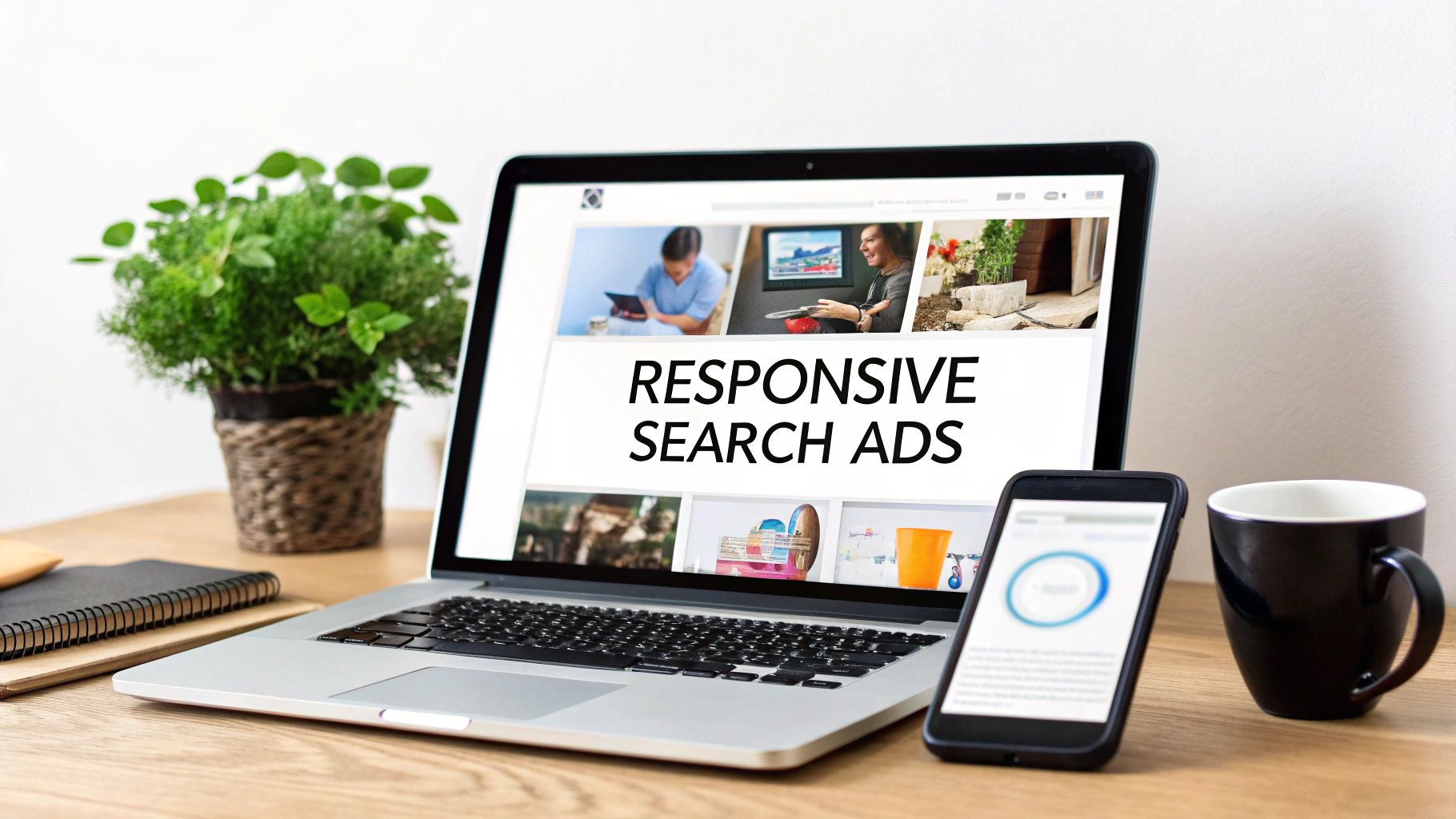
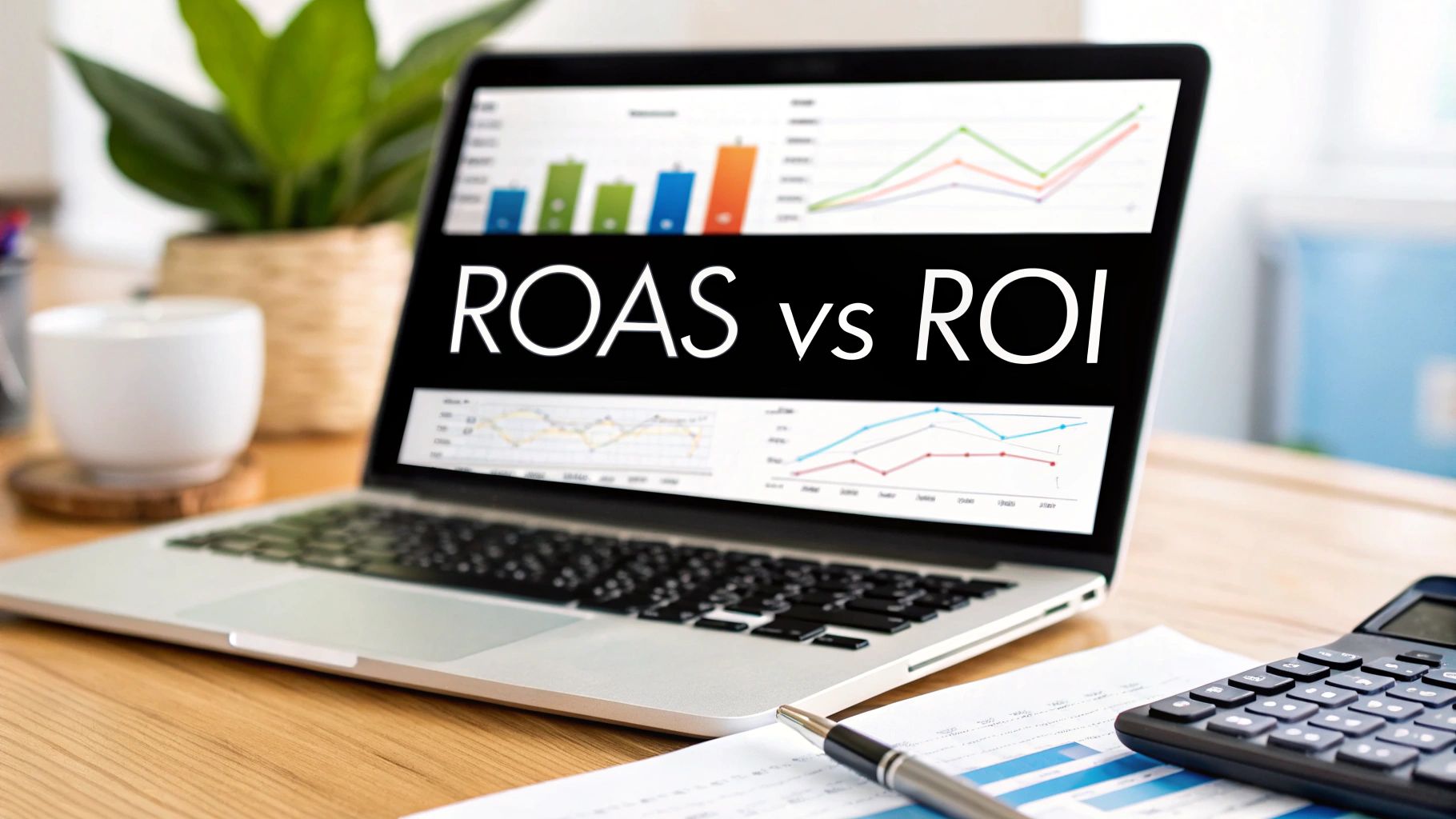
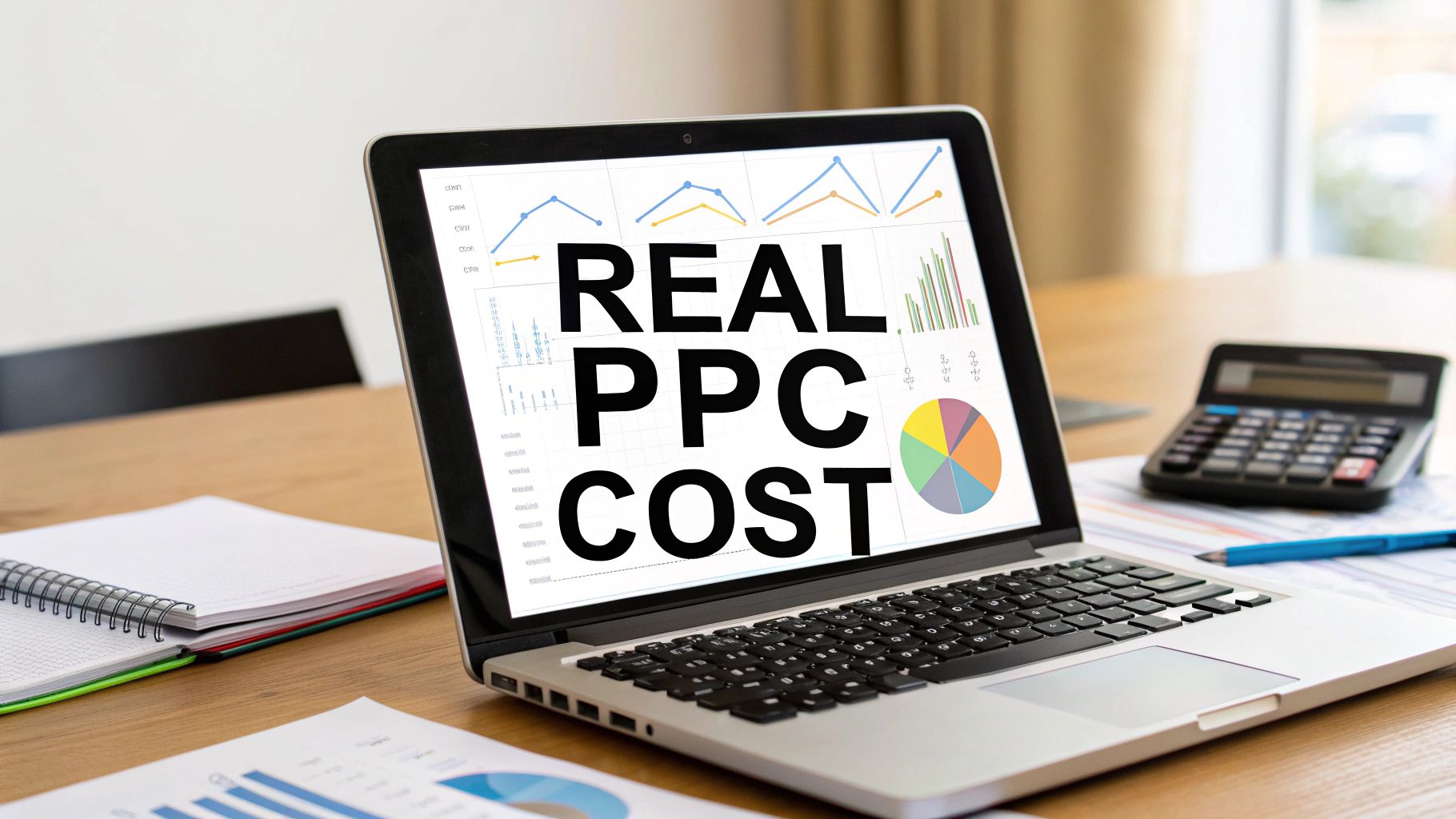
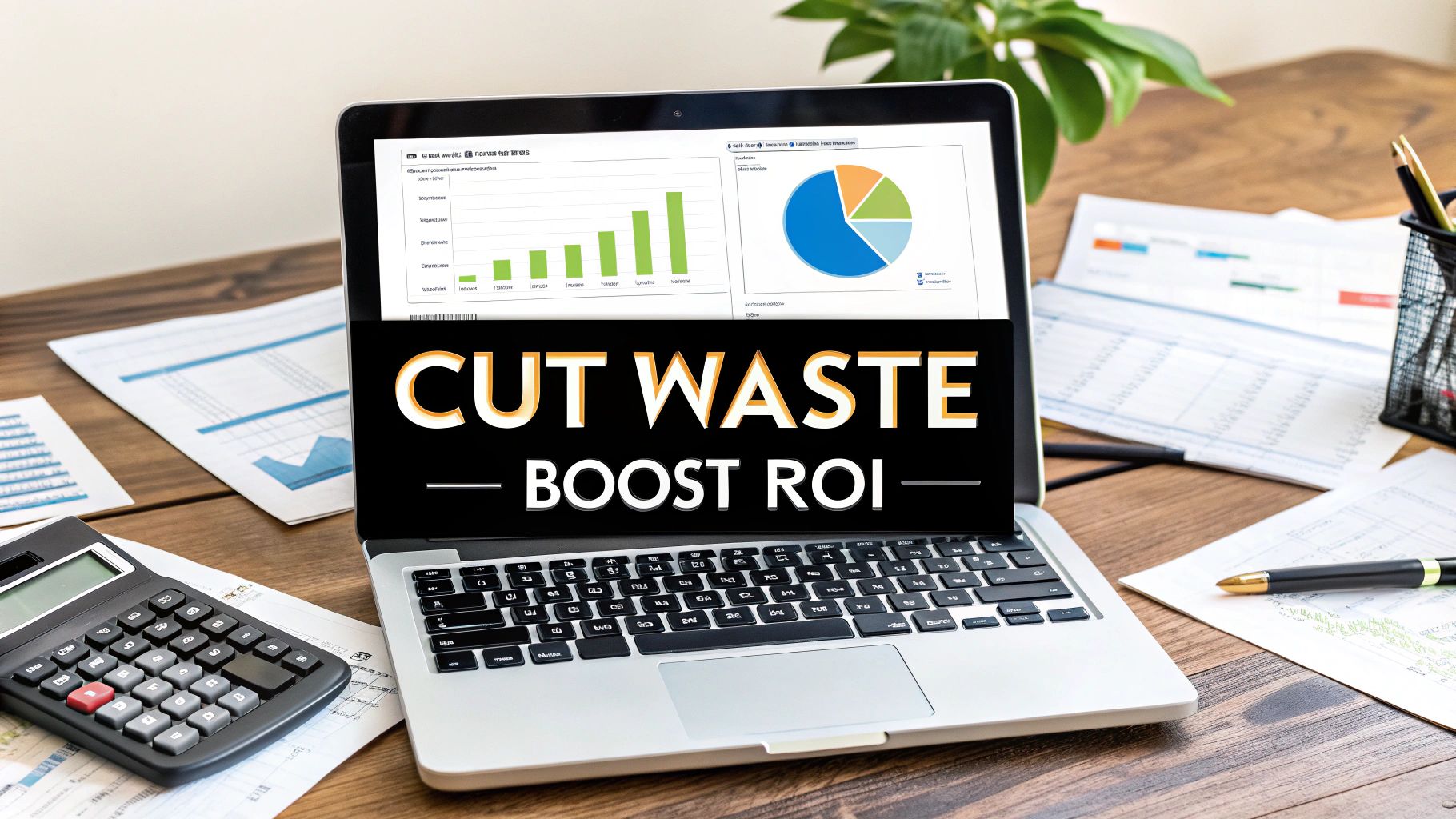
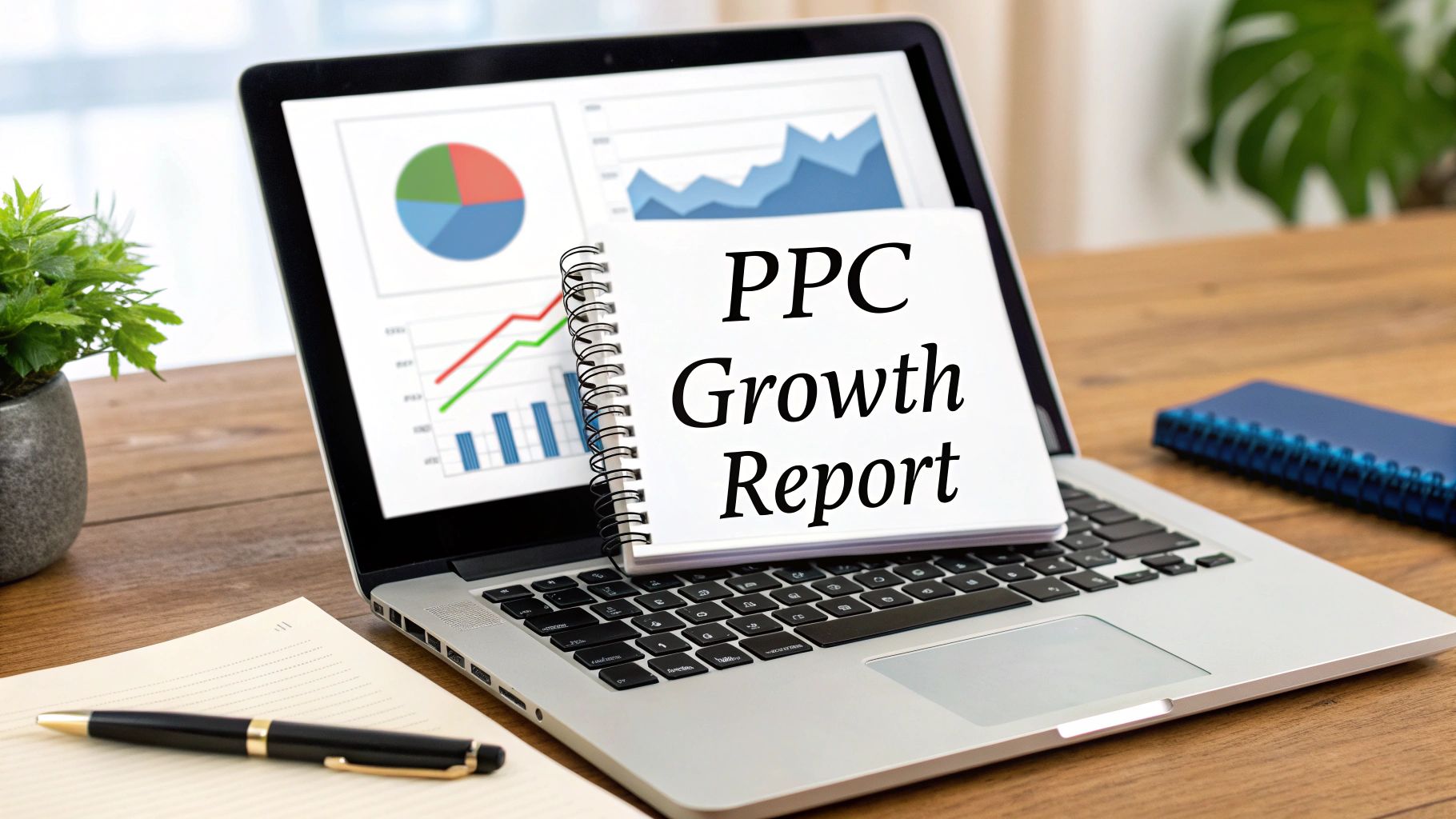
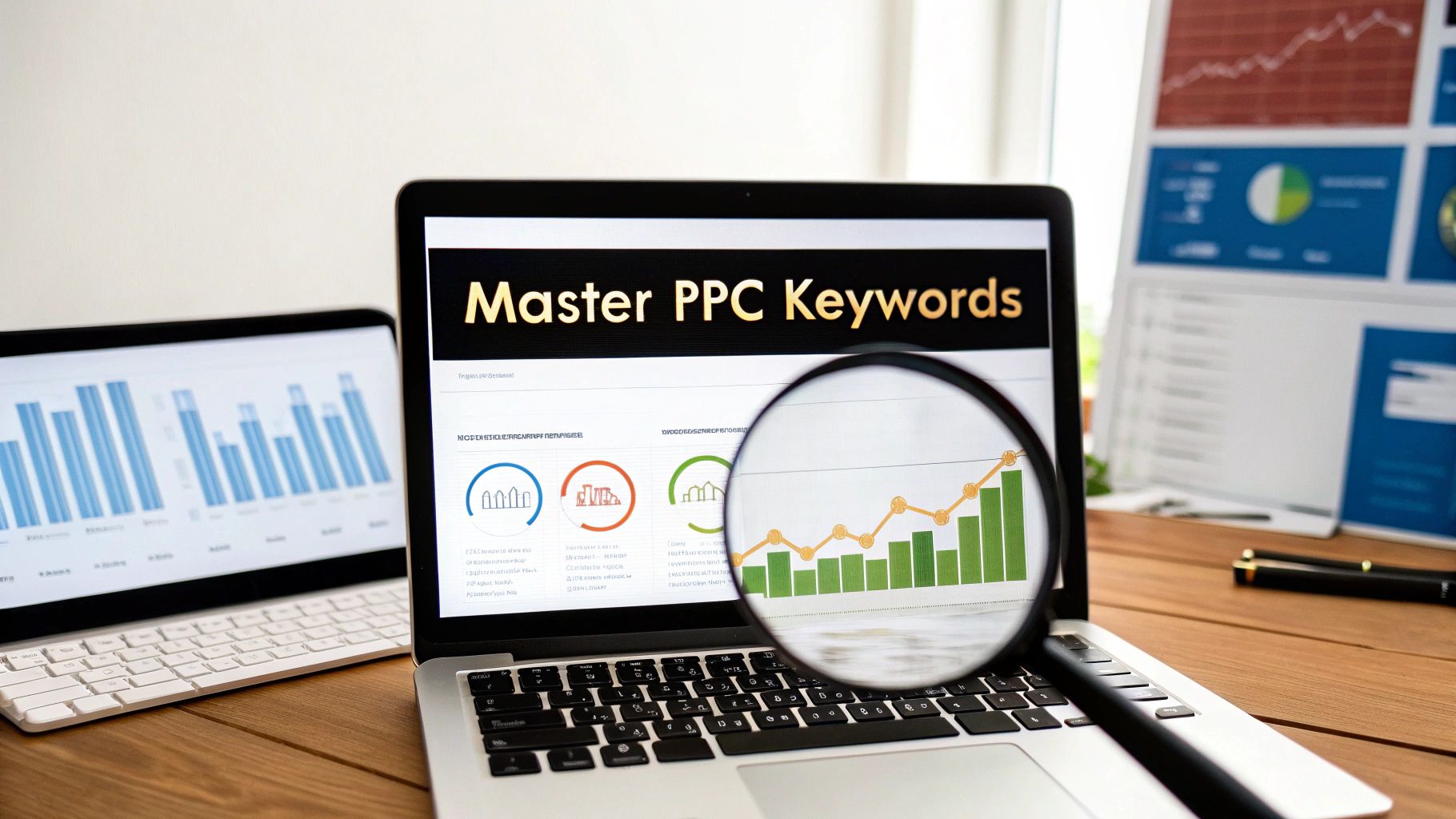
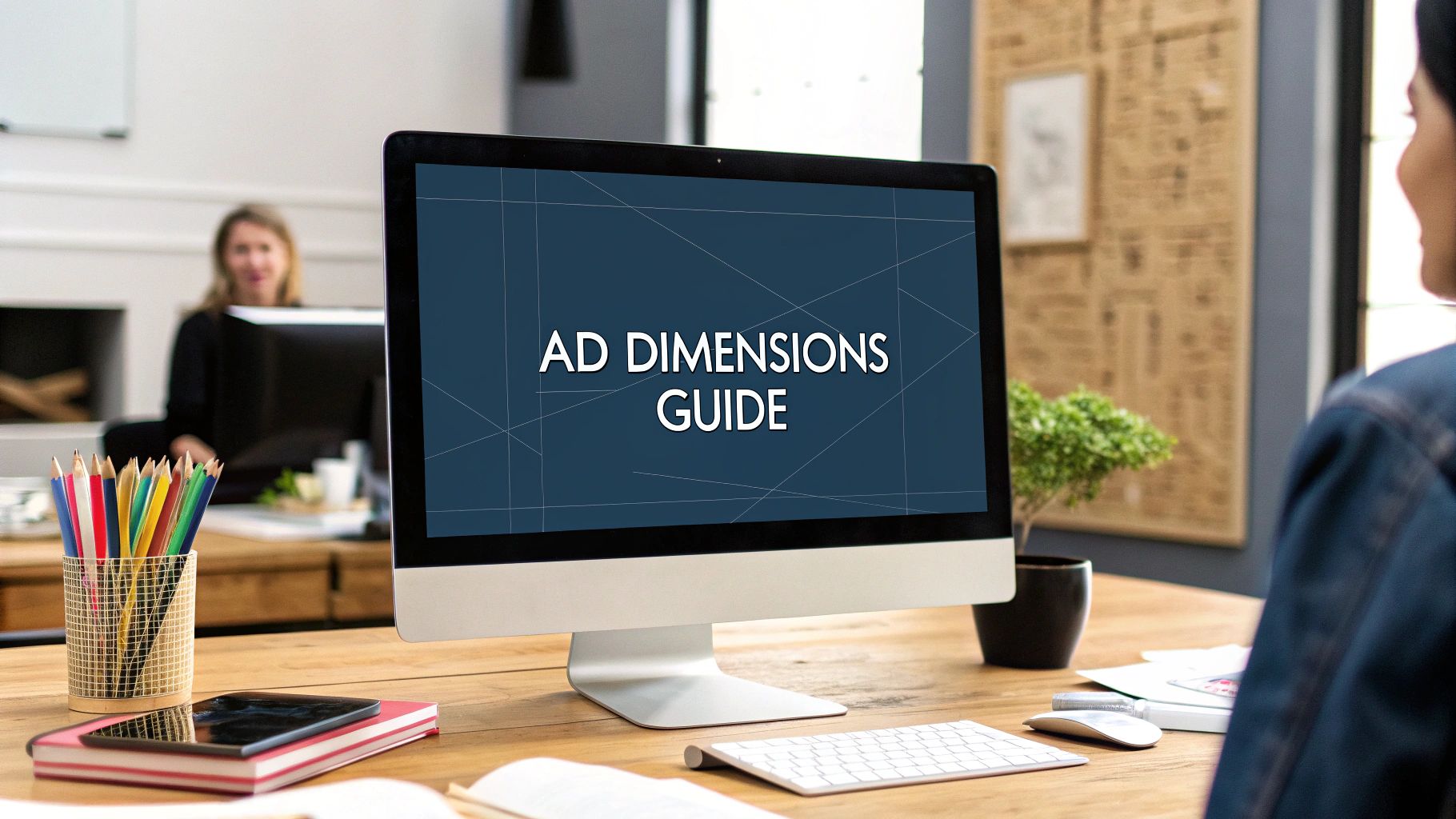
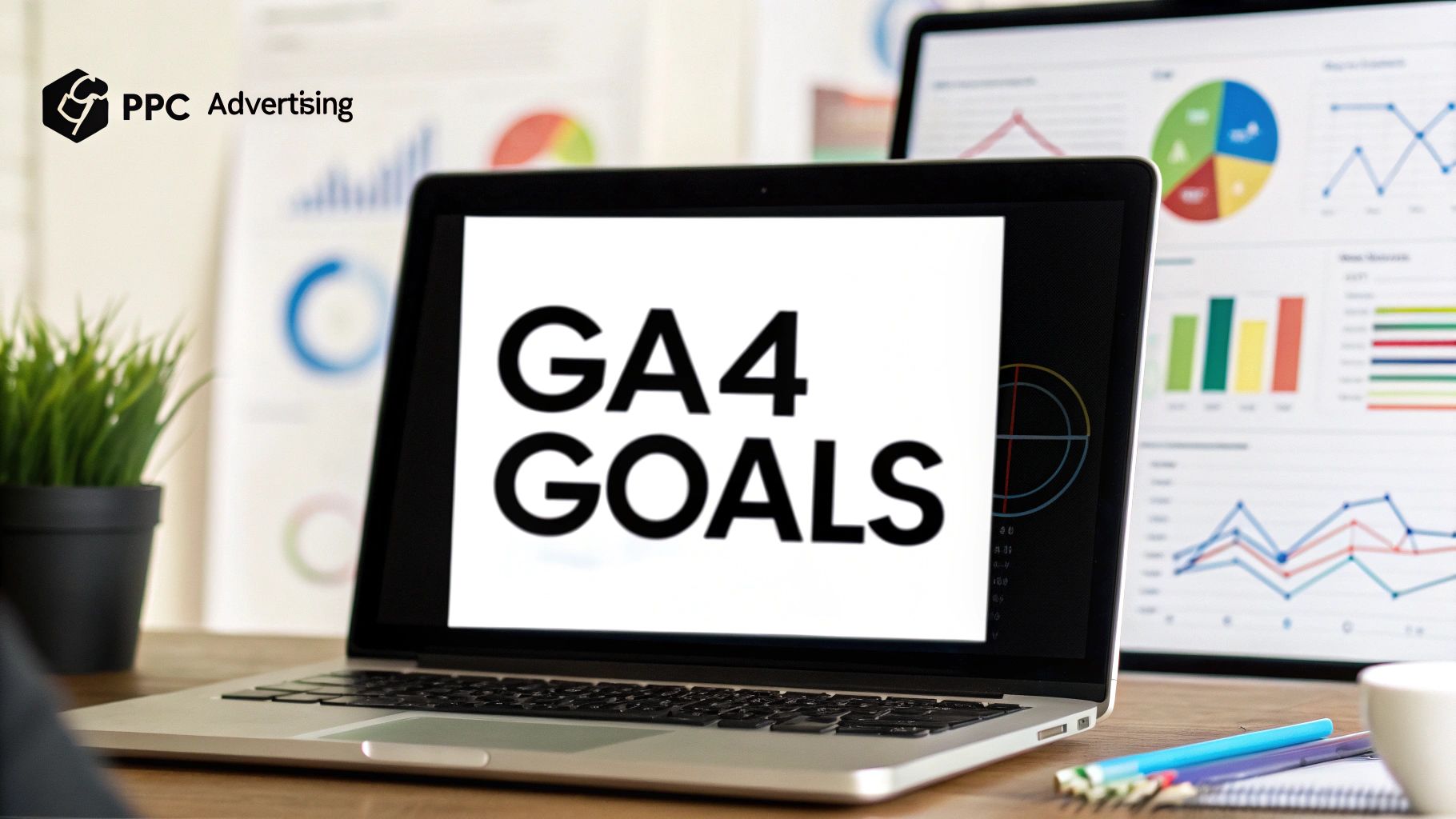
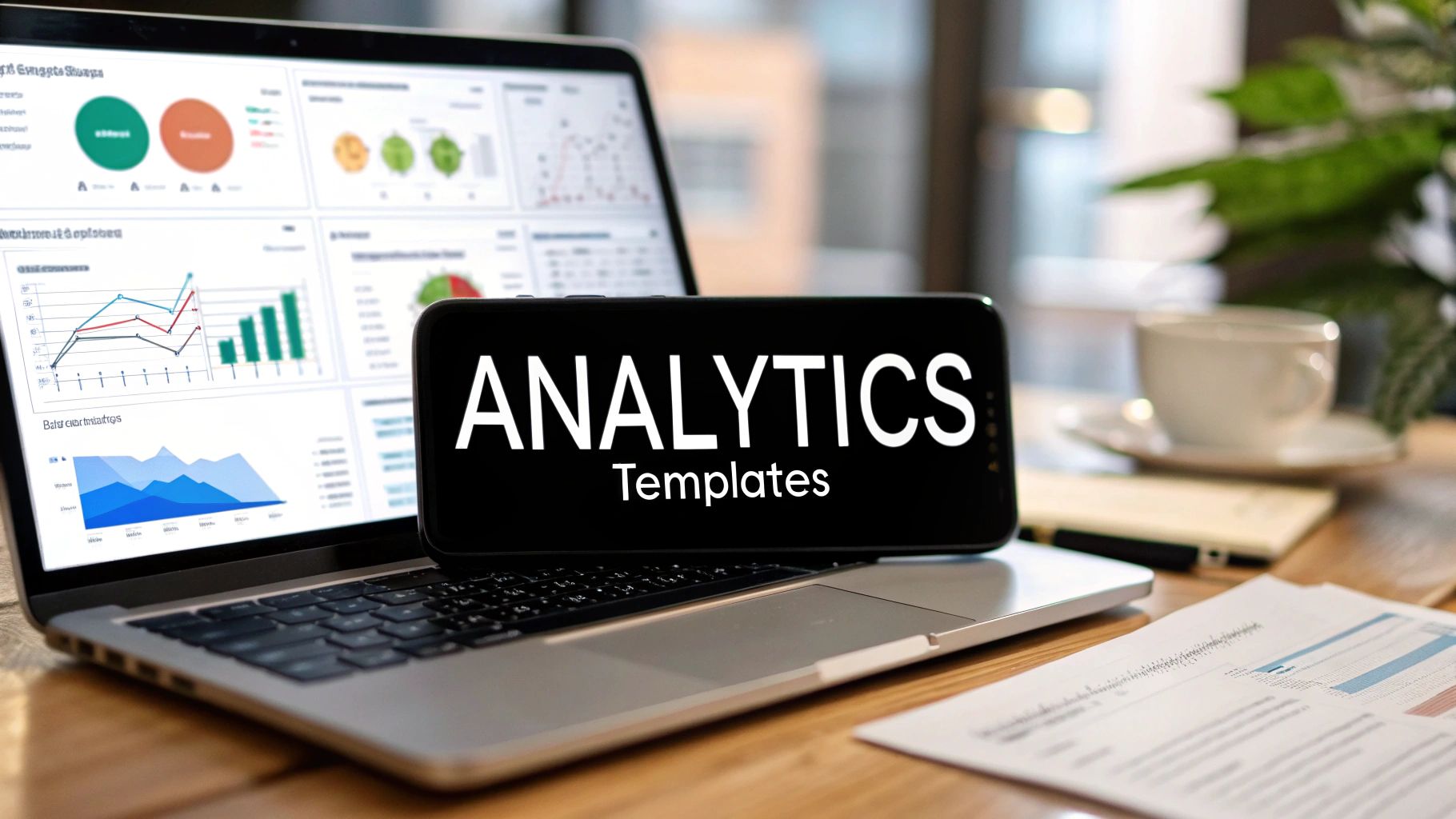
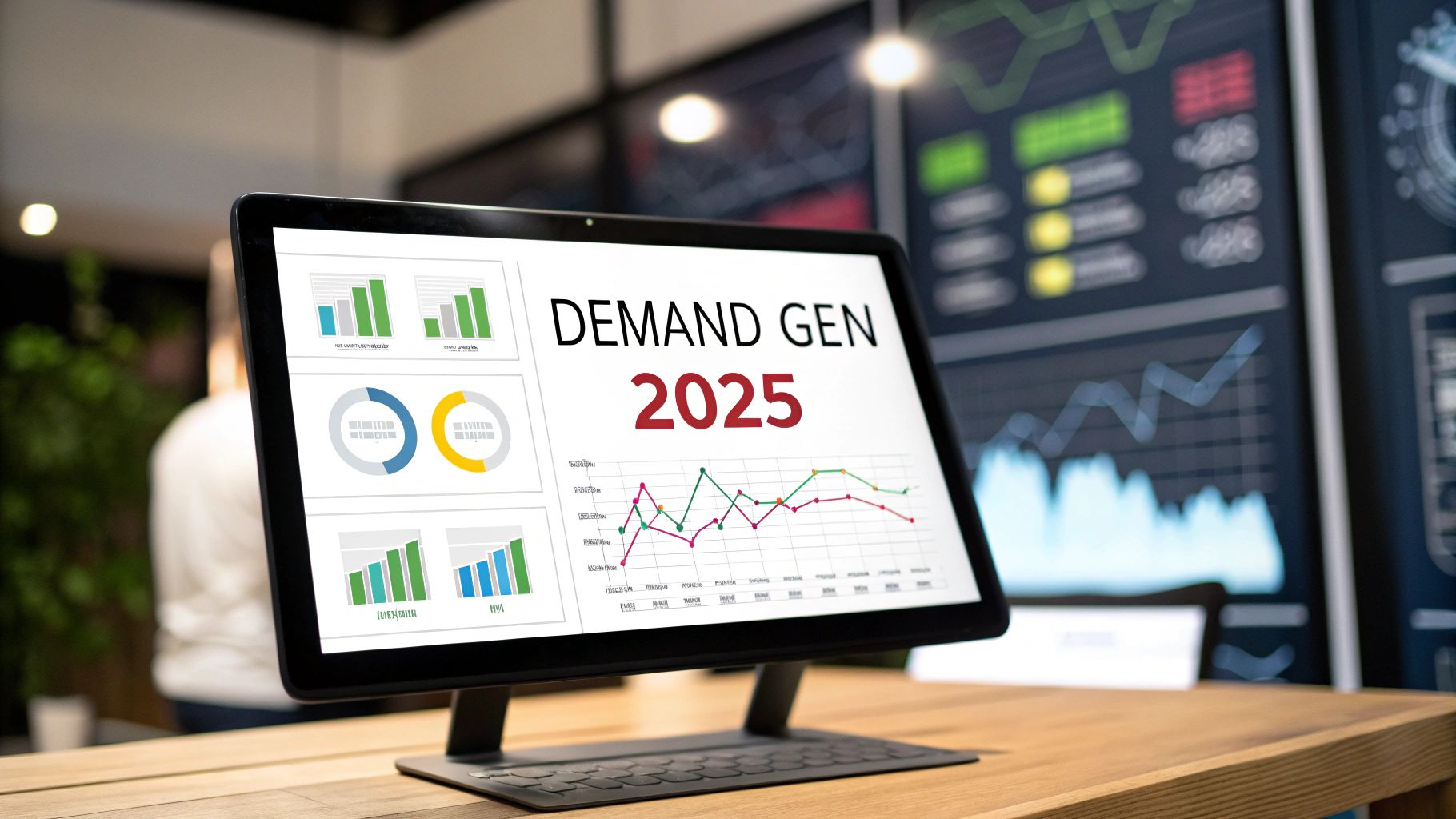
Comments